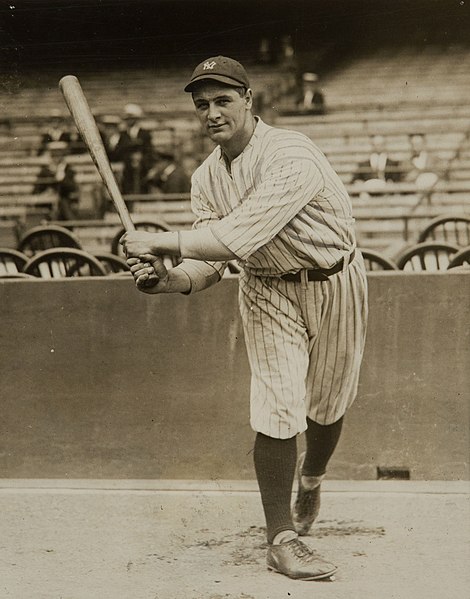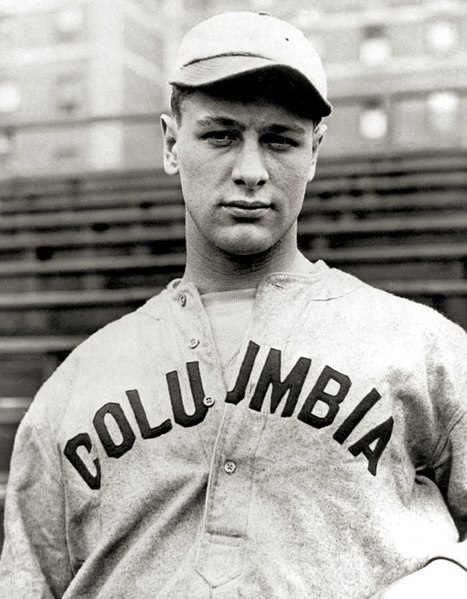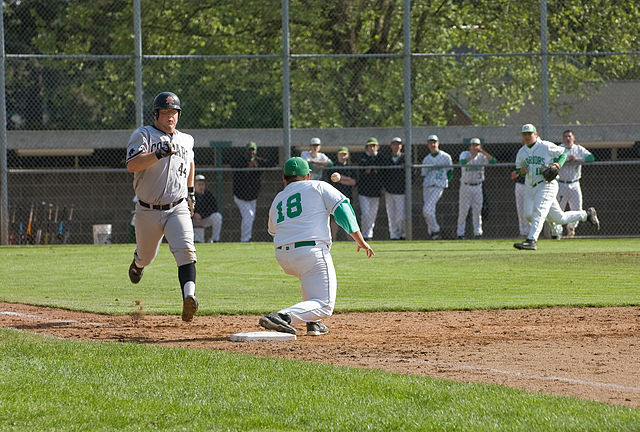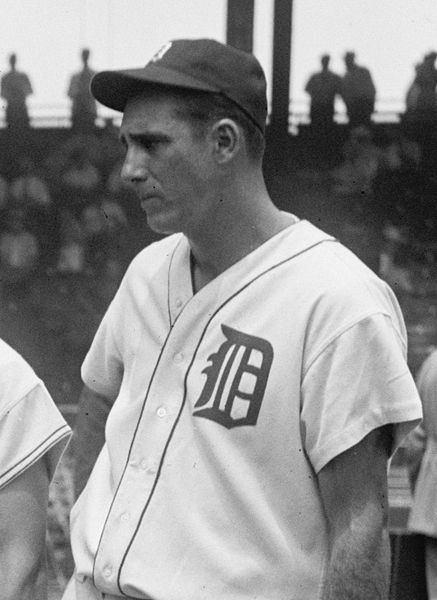Henry Louis Gehrig was an American professional baseball first baseman who played 17 seasons in Major League Baseball (MLB) for the New York Yankees (1923–1939). Gehrig was renowned for his prowess as a hitter and for his durability, which earned him his nickname "the Iron Horse". He is widely regarded as one of the greatest baseball players of all time. He was an All-Star seven consecutive times, a Triple Crown winner once, an American League (AL) Most Valuable Player twice, and a member of six World Series champion teams. He had a career .340 batting average, .632 slugging average, and a .447 on-base average. He hit 493 home runs and had 1,995 runs batted in (RBI). He still has the highest ratio of runs scored plus runs batted in per 100 plate appearances (35.08) and per 100 games (156.7) among Hall of Fame players. In 1939, he was elected to the Baseball Hall of Fame and was the first MLB player to have his uniform number (4) retired by a team.

Gehrig with the New York Yankees in 1923
Gehrig on the Columbia University baseball team
Gehrig as a player for the Columbia University football team, 1922
Gehrig and Detroit slugger Hank Greenberg in 1935
A first baseman, abbreviated 1B, is the player on a baseball or softball team who fields the area nearest first base, the first of four bases a baserunner must touch in succession to score a run. The first baseman is responsible for the majority of plays made at that base. In the numbering system used to record defensive plays, the first baseman is assigned the number 3.
Sean Casey, former first baseman for the Cincinnati Reds tries unsuccessfully to keep his foot on the base while receiving a throw from an infielder.
A high school first baseman takes a throw from the third baseman in an attempt to have the runner called "out".
Eric Hosmer of the San Diego Padres, an example of a left-handed throwing first baseman.
Hank Greenberg, Hall of Fame first baseman and 2-time MVP








